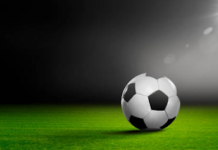In the field of physics, the behavior of particles with mass and charge plays a fundamental role in understanding the workings of the universe. These particles, with their unique properties, interact with various forces and fields to exhibit intricate behaviors that are crucial in the study of electromagnetic phenomena, quantum mechanics, and particle physics. In this comprehensive article, we will delve into the behavior of a particle with mass (M) and charge (Q), exploring the concepts of electric and magnetic fields, forces acting on the particle, and the implications of relativity on its motion.
Electric Field and Particle Behavior
The electric field plays a vital role in determining the behavior of a charged particle. When a particle with charge Q is placed in an electric field, it experiences a force given by Coulomb’s law:
F = Q * E
where F is the force acting on the particle, Q is the charge of the particle, and E is the electric field at the particle’s location. The direction of the force depends on the sign of the charge: positive charges experience a force in the direction of the electric field, while negative charges experience a force in the opposite direction.
Magnetic Field and Particle Motion
When a charged particle with charge Q and velocity v moves through a magnetic field, it experiences a magnetic force known as the Lorentz force:
F = Q * (v x B)
where F is the magnetic force, v is the velocity of the particle, B is the magnetic field, and x denotes the cross product. The magnetic force acts perpendicular to both the velocity of the particle and the magnetic field, causing the particle to move in a curved path.
Combined Electric and Magnetic Fields
When both electric and magnetic fields are present, a charged particle experiences a combined force known as the Lorentz force:
F = Q * (E + v x B)
This force determines the trajectory of the particle, leading to complex motion patterns depending on the relative strengths and directions of the electric and magnetic fields.
Relativistic Effects on Particle Behavior
In scenarios where the speed of the charged particle approaches the speed of light, relativistic effects become significant. According to special relativity, the mass of a particle increases with its velocity, leading to changes in its momentum and energy. The behavior of a particle with mass M and charge Q in relativistic situations is described by the Lorentz force law and Einstein’s famous equation E=mc².
Quantum Mechanical Behavior of Charged Particles
At the quantum level, charged particles such as electrons exhibit wave-particle duality. The behavior of these particles is described by quantum mechanics, with concepts like wave functions, probability amplitudes, and quantum superposition playing a crucial role in understanding their behavior. The interaction of charged particles with electromagnetic fields gives rise to phenomena such as quantized energy levels, tunneling, and interference patterns.
Factors Affecting Particle Behavior
Several factors influence the behavior of a particle with mass M and charge Q:
- Magnitude and direction of electric and magnetic fields: The strength and orientation of the fields determine the forces acting on the particle.
- Velocity of the particle: The speed and direction of the particle affect its trajectory in the presence of electromagnetic fields.
- Mass-to-charge ratio: The ratio of the particle’s mass to its charge influences its acceleration and response to external forces.
- Relativistic effects: Near the speed of light, relativistic effects become significant, altering the particle’s behavior.
- Quantum mechanical considerations: At the quantum level, the wave-like nature of particles and probabilistic outcomes impact their behavior.
Understanding the behavior of a particle with mass M and charge Q is essential in various fields of physics, including particle physics, quantum mechanics, and electromagnetic theory. By analyzing the interactions of charged particles with electric and magnetic fields, considering relativistic effects, and incorporating quantum principles, scientists can unravel the mysteries of the universe at both macroscopic and microscopic scales.
Frequently Asked Questions (FAQs)
Q1: What is the significance of the mass-to-charge ratio for a charged particle?
A1: The mass-to-charge ratio determines how a charged particle accelerates in electric and magnetic fields, impacting its trajectory and behavior.
Q2: How does relativity affect the motion of a charged particle?
A2: Relativistic effects alter the mass, momentum, and energy of a particle as its speed approaches the speed of light, influencing its behavior in electromagnetic fields.
Q3: Can a charged particle exhibit both wave and particle-like behaviors?
A3: Yes, at the quantum level, charged particles such as electrons display wave-particle duality, behaving as both waves and particles in different experimental setups.
Q4: What happens when a charged particle moves through a region with both electric and magnetic fields?
A4: The particle experiences a combined force known as the Lorentz force, leading to complex trajectories depending on the relative strengths and orientations of the fields.
Q5: How do quantum mechanics explain the behavior of charged particles?
A5: Quantum mechanics uses wave functions and probabilistic interpretations to describe the behavior of charged particles, incorporating principles of superposition and quantization.
By delving into the behavior of particles with mass M and charge Q, scientists can uncover the underlying principles governing the dynamics of the universe, from subatomic interactions to astronomical phenomena. The intricate interplay between electric and magnetic fields, relativistic effects, and quantum mechanical behaviors offers a rich tapestry for exploration and discovery in the realm of physics.









